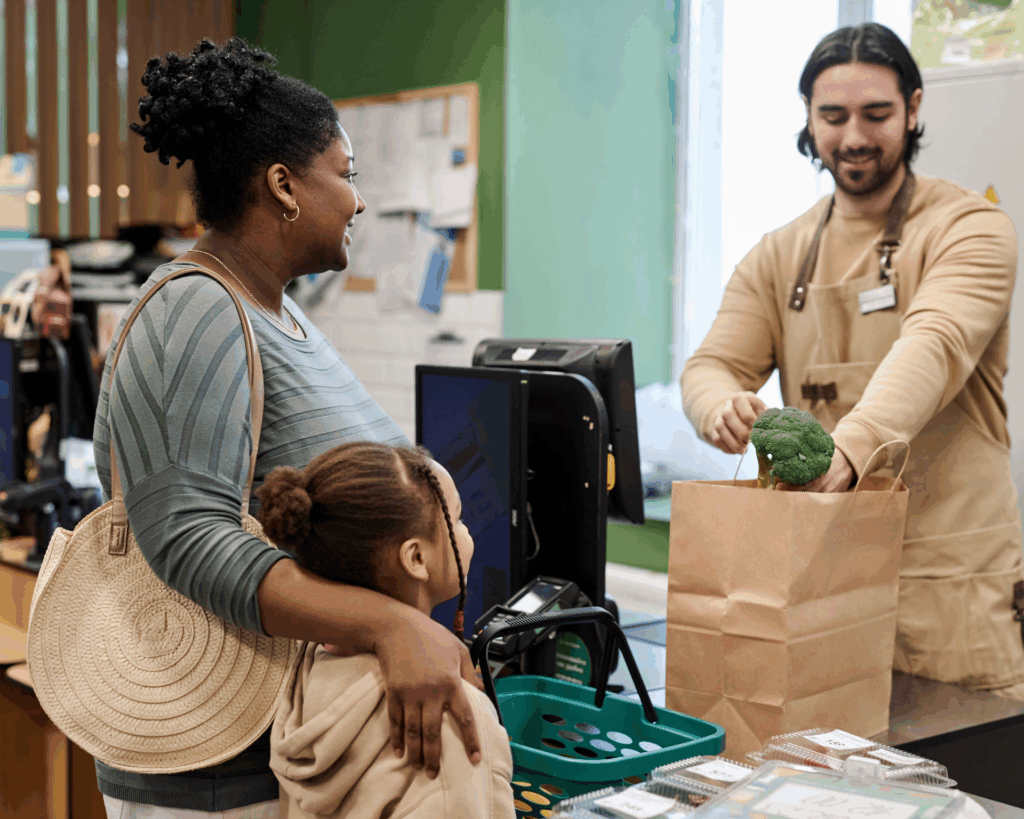Prescribing Fruits and Vegetables
Through partnerships with supermarkets and health providers, it is possible to improve consumption of fruits and vegetables among low-income residents.

Read Time: 3 minutes
Published:
According to the US Department of Health and Human Services, a healthy diet consists of 2½ cups of vegetables and 2 cups of fruits per day. But three-fourths of the American population consumes less than this recommended amount. Instead, most Americans eat far more than the recommended quantities of added sugars, saturated fats, and sodium.
A key driver of unhealthy eating habits is food insecurity, which disproportionately affects people of color, rural residents, and the poor. Without access to healthy foods, individuals are at increased risk of developing chronic diseases like type 2 diabetes and hypertension.
Programs that increase affordability of healthy foods through financial incentives, like preloaded debit cards and coupons, have successfully mitigated these risks by improving fruit and vegetable consumption and food security among participants. However, despite their success, it is often difficult to scale such programs because they rely on partnerships with farmers markets and small-scale grocers. As a result, seasonality and limited variety of healthy products undermine long-term impact.
To address these challenges, the Washington State Department of Health launched a statewide fruit and vegetable prescription program in 2016. The health department partnered with hospitals, public health agencies, a community-based organization, and a supermarket chain to prescribe healthy foods to residents experiencing hunger, nutrient-poor diets, and high rates of chronic disease.
The Washington State Department of Health fruit and vegetable prescription program demonstrates that a statewide fruit and vegetable prescription program is translatable across various types of patient–provider encounters.
The prescription was a $10 voucher redeemable for fruits and vegetables at any one of 169 participating supermarkets. Qualifying items included fresh, canned, or frozen fruits and vegetables without added fats, oils, sugars, or salt. Prescriptions were available in English, Spanish, and Russian. The vouchers were valid for one month.
Prescribers—including dieticians, nutritionists, nurses, social workers, health educators, and community health workers—distributed prescriptions to eligible participants through various patient encounters such as maternal, infant, and child health visits, health and nutrition education classes, and community events.
Overall, $154,810 in fruit and vegetable prescriptions (54.4%) were redeemed during the study period (2016-2018). Eighty-eight percent of participants also reported eating more fruits and vegetables as a result of the prescription. By incorporating food insecurity screening, bilingual staff, and nutrition services into their workflows, providers experienced an increase in patients who scheduled and kept more follow-up appointments. Participating providers reported higher-than-average completion rates among patients in chronic disease self-management programs as a result of offering fruit and vegetable prescriptions.
The Washington State Department of Health fruit and vegetable prescription program demonstrates that a statewide fruit and vegetable prescription program is translatable across various types of patient–provider encounters. Through partnership with a supermarket chain and health providers, it is possible to improve consumption of fruits and vegetables among low-income residents.
Photo by Tim Foster on Unsplash



